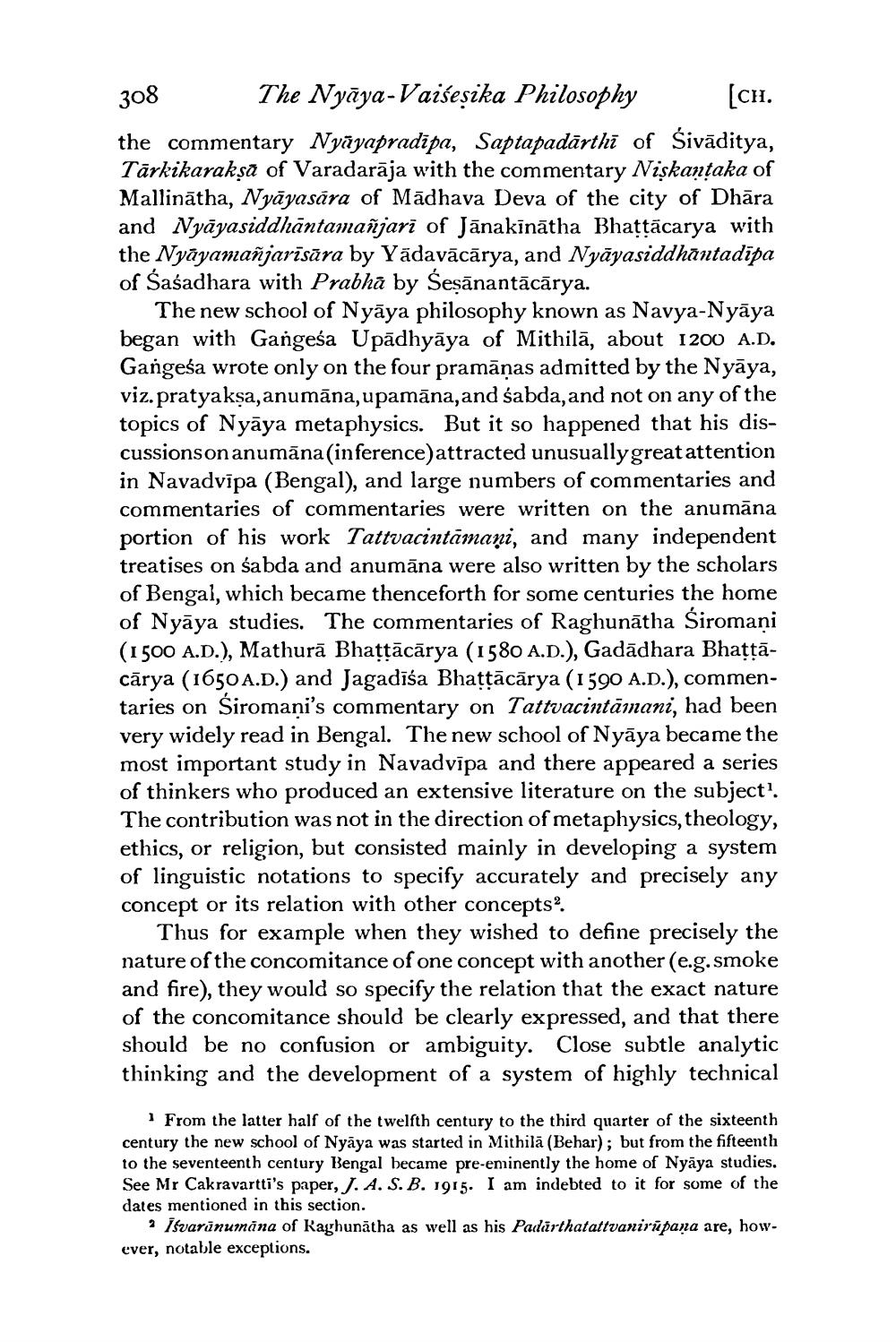________________
308 The Nyāya-Vaiseșika Philosophy (ch. the commentary Nyāyapradipa, Saptapadārthi of Śivāditya, Tārkikarakṣa of Varadarāja with the commentary Niskantaka of Mallinātha, Nyāyasăra of Mādhava Deva of the city of Dhāra and Nyāyasiddhāntamañjarī of Jānakīnātha Bhattācarya with the Nyāyamañjarīsāra by Yādavācārya, and Nyāyasiddhantadīpa of Śaśadhara with Prabhā by Śeşānantācārya.
The new school of Nyāya philosophy known as Navya-Nyāya began with Gangeśa Upādhyāya of Mithilā, about 1200 A.D. Gangesa wrote only on the four pramāņas admitted by the Nyāya, viz. pratyaksa, anumāna, upamāna, and sabda, and not on any of the topics of Nyāya metaphysics. But it so happened that his discussionsonanumāna (inference)attracted unusually great attention in Navadvīpa (Bengal), and large numbers of commentaries and commentaries of commentaries were written on the anumāna portion of his work Tattvacintāmaņi, and many independent treatises on sabda and anumāna were also written by the scholars of Bengal, which became thenceforth for some centuries the home of Nyāya studies. The commentaries of Raghunātha Siromani (1500 A.D.), Mathurā Bhattācārya (1580 A.D.), Gadādhara Bhattācārya (1650 A.D.) and Jagadīša Bhattācārya (1590 A.D.), commentaries on Siromaņi's commentary on Tattvacintāmani, had been very widely read in Bengal. The new school of Nyāya became the most important study in Navadvīpa and there appeared a series of thinkers who produced an extensive literature on the subject. The contribution was not in the direction of metaphysics, theology, ethics, or religion, but consisted mainly in developing a system of linguistic notations to specify accurately and precisely any concept or its relation with other concepts
Thus for example when they wished to define precisely the nature of the concomitance of one concept with another (e.g.smoke and fire), they would so specify the relation that the exact nature of the concomitance should be clearly expressed, and that there should be no confusion or ambiguity. Close subtle analytic thinking and the development of a system of highly technical
From the latter half of the twelfth century to the third quarter of the sixteenth century the new school of Nyāya was started in Mithilā (Behar); but from the fifteenth to the seventeenth century Bengal became pre-eminently the home of Nyāya studies. See Mr Cakravartti's paper, J. A.S.B. 1915. I am indebted to it for some of the dates mentioned in this section.
? Isvarīnumana of Raghunatha as well as his Padarthatattvanirūpana are, however, notable exceptions.




